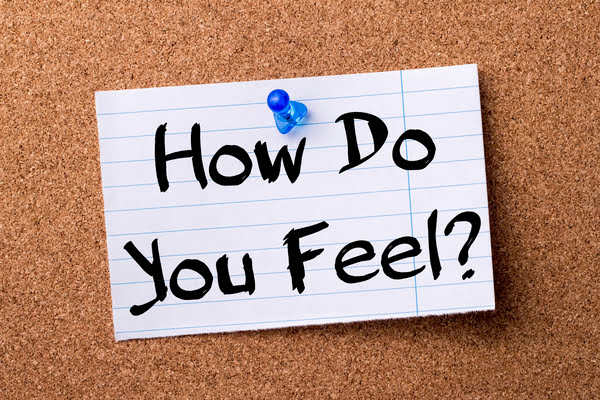Emotion is one of the most complex, highly-debated topics in psychology. Even after decades of research, there still isn’t a consensus on what constitutes an emotion. You can’t define what you can’t clearly understand.
As a result, there’s no universal definition of emotion.1
Still, a definition we can work with would be:
Emotions are signals that notify us of a change in our internal and external environment, motivating us to take action.
All emotions are mental states, but all mental states are not emotions. Think of mental states as a spectrum. On one end, you have the cognition (pure thought) part; on the other, you affect (pure feeling). ‘Mood’ would be a good example of affect.
Valence is an essential feature of affect. It simply means the quality of being positive or negative.
Interest and confusion are good examples of cognitive states. You can be interested in something without feeling positive or negative about it.

Feelings and emotions are used interchangeably, but the two have slight but important differences.
Emotions tend to be internal and external, i.e., they tend to have an outward display (body language and facial expressions).
Feelings are only internal. They’re components of emotions.2
That’s why you hear people say:
“I feel [emotion].”
And not:
“I emotion [feeling].”
‘I feel sad’, but not ‘I emotion sad’.
Thanks to their outward displays, you can often tell what emotion a person is feeling. But you have to ask what feelings they’re feeling more often than not.
Basic vs. complex emotions
Emotions also tend to have a physiological component. They can be registered in the body. Emotions having a physiological component have been classified as basic emotions.3
More complex emotions like jealousy, however, don’t have a discernible physiological component, but it’s still a basic emotion. Hence, it isn’t helpful to classify emotions as basic or complex. Emotions are emotions.
To further complicate the story, some emotions have variations while others are pure. A pure emotion, like pleasure, has no variation. Fear, on the other hand, can manifest in many forms.
Emotions that have variations vary in intensity, meaning, and context.
Emotions chart
The chart below is the culmination of decades of research on emotion categorization. The most important selection criterion was valence.

More negative than positive emotions on the chart doesn’t mean it’s unbalanced. It simply means that humans generally experience more negative than positive emotional states.
This is why many self-help resources cover overcoming negative thoughts and emotions. And why happiness has always seemed elusive to humanity.
This negativity bias in humans is a survival mechanism to help us detect (sometimes over-detect) threats in our environment so we can take measures to stay safe.
References
- Ortony, A. (2022). Are all “basic emotions” emotions? A problem for the (basic) emotions construct. Perspectives on psychological science, 17(1), 41-61.
- Kleinginna, P. R., & Kleinginna, A. M. (1981). A categorized list of emotion definitions, with suggestions for a consensual definition. Motivation and emotion, 5, 345-379.
- Ekman, P. (1992). An argument for basic emotions. Cognition & emotion, 6(3-4), 169-200.

